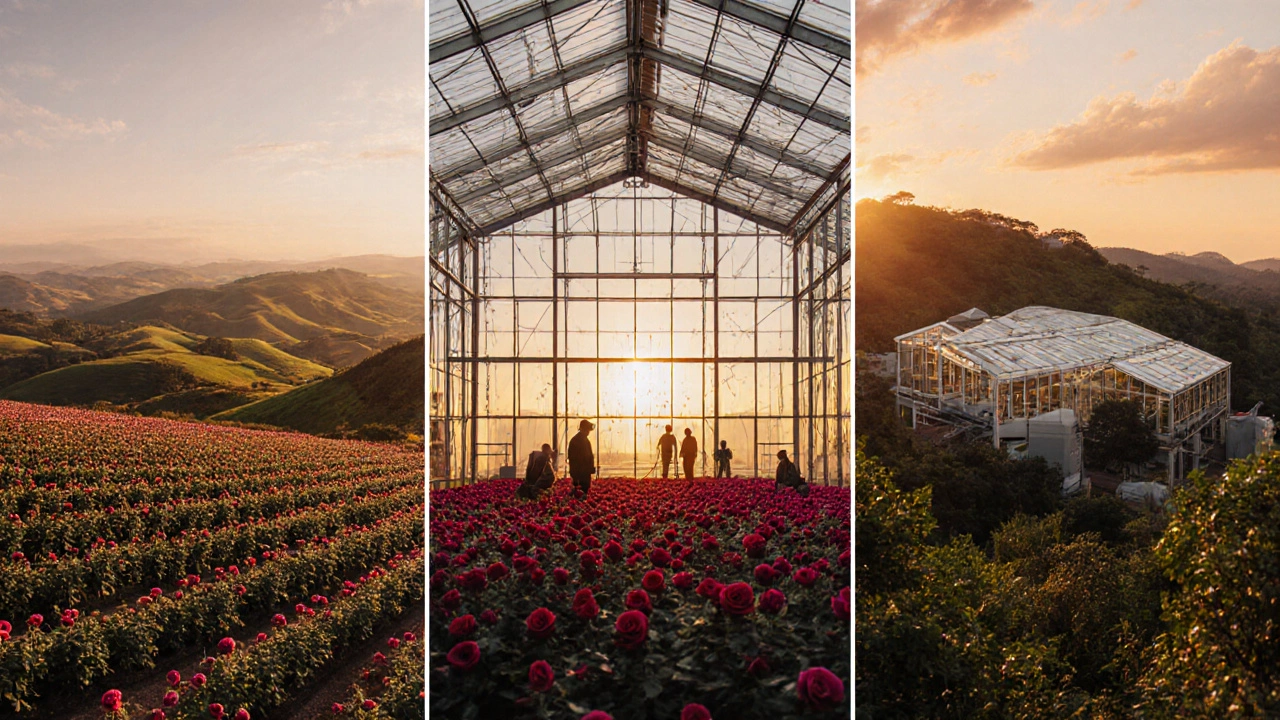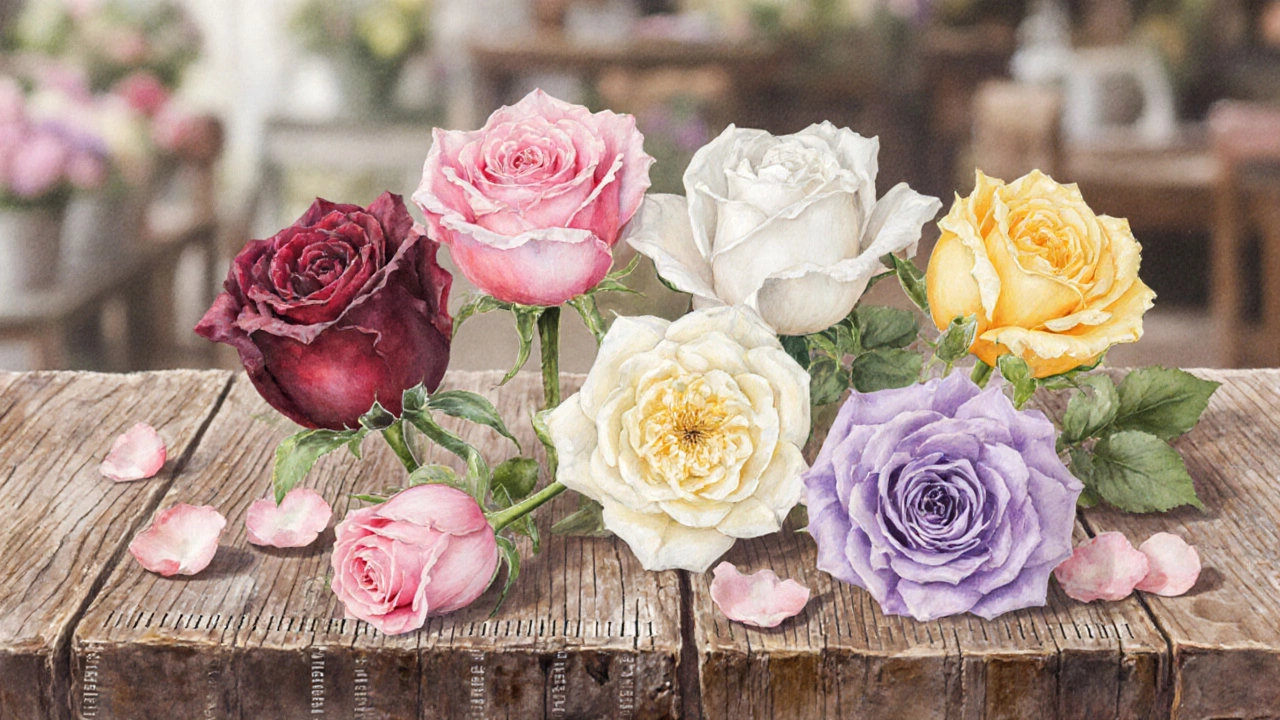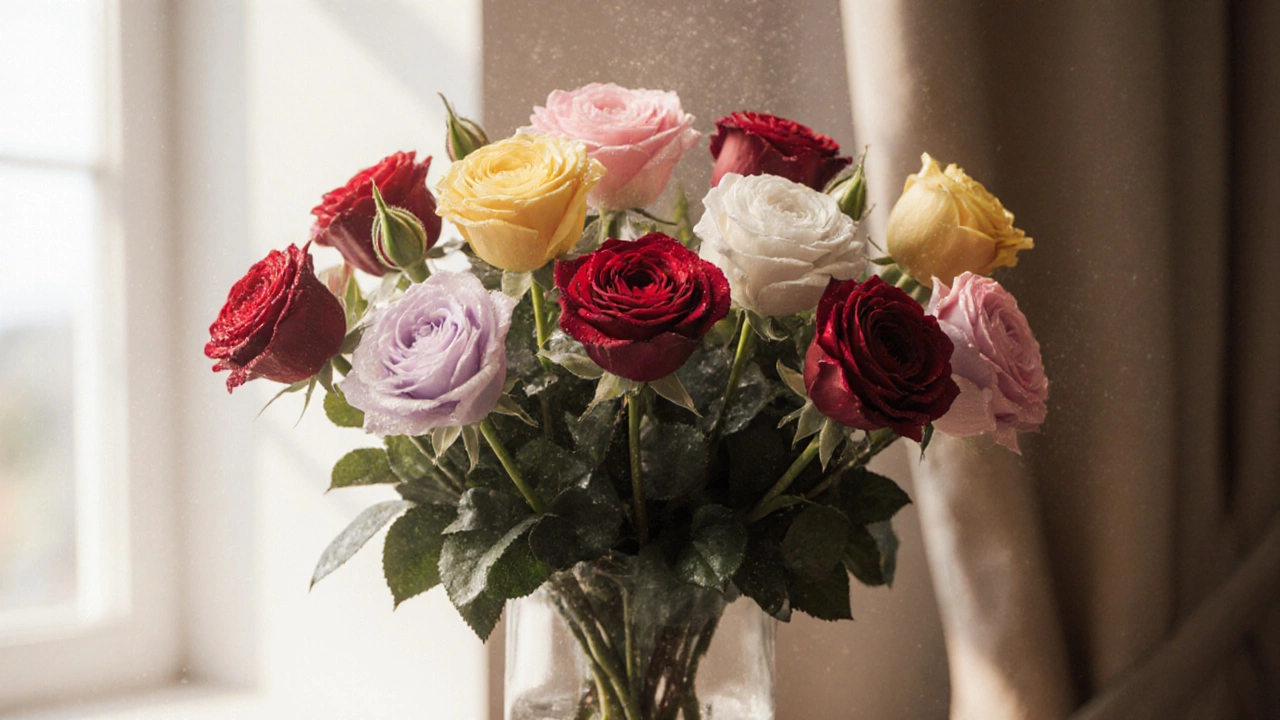Cut Flower Sales Calculator
Estimated Sales
Enter values and click calculate to see estimated sales figures.
Ever wondered which cut flower dominates the global market? The answer isn’t a mystery - it’s the Rose the most sold cut flower worldwide, known for its endless color range, sweet scent, and long vase life. Below we break down why roses outrank every other stem, how the numbers look, and what that means for anyone buying fresh blooms.
Key Takeaways
- The rose holds the #1 spot in global cut‑flower sales, accounting for roughly 30‑35% of all stems sold each year.
- Its dominance comes from a blend of cultural symbolism, broad color palette, and robust supply chains anchored in greenhouse production.
- Top competitors - carnation, lily, tulip and chrysanthemum - each capture 5‑10% of the market but serve niche uses.
- When buying, consider seasonality, stem length, and storage to get the best value from the world’s favorite flower.
Let’s dive into the data, the reasons behind the rose’s reign, and practical tips for picking the perfect cut flower for any occasion.
Global Sales Snapshot
According to the International Floriculture Market Report 2024, total cut‑flower shipments topped 22billion stems. Of that, roses represented roughly 7billion stems, translating to a market share of 31%. The next four best‑selling species - carnation, lily, tulip and chrysanthemum - together made up another 25% of sales.
The sheer volume of roses is driven by three major production hubs:
- Kenya: 1.2billion stems annually, favored for its high‑altitude climate.
- Netherlands: 1.0billion stems, strong greenhouse infrastructure.
- Ecuador: 0.9billion stems, renowned for year‑round production.
These regions supply the bulk of roses to wholesale markets across Europe, North America and Asia, keeping prices relatively stable even during peak demand periods like Valentine’s Day and Mother’s Day.
Why the Rose Reigns Supreme
Three core factors give roses an unbeatable edge.
- Versatility - From delicate miniatures to giant exhibition blooms, roses adapt to every style of arrangement. Their colors range from classic reds to pastel pinks, striking yellows, and even bi‑color hybrids, letting florists match any theme.
- Longevity - Properly conditioned roses can stay fresh up to two weeks, outlasting many other cut flowers. This shelf life reduces waste and improves profit margins for retailers.
- Symbolic Power - Across cultures, roses convey love, celebration, sympathy and respect. That emotional weight drives demand for weddings, anniversaries, funerals and corporate events.
Combined with advanced greenhouse technology that controls temperature, humidity and light, roses can be harvested at precise stages for optimum bloom opening and fragrance.

Top 5 Best‑Selling Cut Flowers - Quick Comparison
| Flower | Global stems (bn) | Avg. price per stem (USD) | Main production regions | Typical uses |
|---|---|---|---|---|
| Rose | 7.0 | 0.80 | Kenya, Netherlands, Ecuador | Weddings, bouquets, corporate events |
| Carnation | 2.5 | 0.45 | Spain, Colombia, India | Funerals, corsages, bulk arrangements |
| Lily | 2.2 | 1.20 | Netherlands, USA, Israel | Elegant centerpieces, upscale weddings |
| Tulip | 1.8 | 0.60 | Netherlands, Turkey, USA | d>Spring events, modern décor|
| Chrysanthemum | 1.5 | 0.70 | China, Italy, USA | Autumn weddings, funeral arrangements |
Choosing the Right Rose for Your Event
Not all roses are created equal. Here’s a quick cheat sheet.
- Color meaning - Red: romantic love; Pink: gratitude; White: purity; Yellow: friendship; Lavender: enchantment.
- Stem length - Short (15‑20cm) works well in compact bouquets; Long (30‑45cm) is ideal for dramatic runway‑style arrangements.
- Fragrance level - ‘GrandParis’ and ‘DavidAustin’ varieties emit strong perfume, perfect for intimate settings, while ‘Iceberg’ offers a milder scent that won’t overwhelm guests.
- Bud size - Mini roses (2‑3cm) suit delicate hairpieces; standard buds (5‑6cm) dominate traditional bouquets.
When you know the vibe of your event, you can pick a rose that reinforces the mood without looking out of place.
Buying Tips - Getting the Best Value
Whether you shop at a local florist or order from a wholesale market, keep these pointers in mind.
- Check the foliage - Fresh, vibrant leaves indicate recent harvesting.
- Inspect the buds - Open buds should be just beginning to unfurl; fully opened buds wilt faster.
- Ask about conditioning - Reputable suppliers dip stems in a preservative solution (sugar, acid, biocide) to extend vase life.
- Season matters - While roses are grown year‑round in greenhouses, peak quality and lower prices appear in March‑May and September‑November.
- Storage - Keep stems in a cool (2‑4°C) environment, away from direct sunlight. A simple bucket of water with a few drops of bleach can keep them fresh for days.

Common Misconceptions About Roses
Many people think roses are always expensive or fragile, but the data says otherwise.
- In bulk, price per stem can drop below $0.50 for standard garden roses.
- Hybrid teas often get labeled ‘delicate’, yet with proper conditioning they last as long as any long‑stem cut flower.
- “Roses only work for romantic events” is a myth - earthy shades like ‘RusticRed’ or ‘SoftCream’ fit rustic barn weddings and modern corporate luncheons alike.
Mini FAQ - Your Burning Questions Answered
Which rose variety sells the most?
Hybrid tea roses, especially the ‘RedDeluxe’ line, consistently rank at the top of global sales because they combine classic shape, strong fragrance, and a wide color range.
Are roses more expensive than other cut flowers?
Not necessarily. While premium varieties can cost $2‑$3 per stem, bulk‑grade garden roses are often cheaper than specialty lilies or exotic orchids.
How long can I keep roses fresh at home?
With clean water, a floral preservative, and a refrigerator‑like temperature, most roses stay vibrant for 10‑14 days.
What are the eco‑friendly options for buying roses?
Look for roses certified by Fairtrade or Rainforest Alliance; many growers in Kenya and Ecuador now use drip‑irrigation and renewable energy to cut their carbon footprint.
Can I substitute roses with another flower in a wedding bouquet?
Absolutely. If you want a lower‑cost or seasonal look, consider carnations for texture or peonies for a soft, lush feel. Just match the color palette and stem length.
Next Steps - Getting the Perfect Stems
If you’re planning a wedding, event or simply want a gorgeous home arrangement, start by checking local wholesale flower markets during off‑peak seasons for the best deals. Request a small sample batch to test vase life, then scale up based on the results. And remember: a well‑conditioned rose can keep its beauty for weeks, making it the smartest investment for any floral budget.

